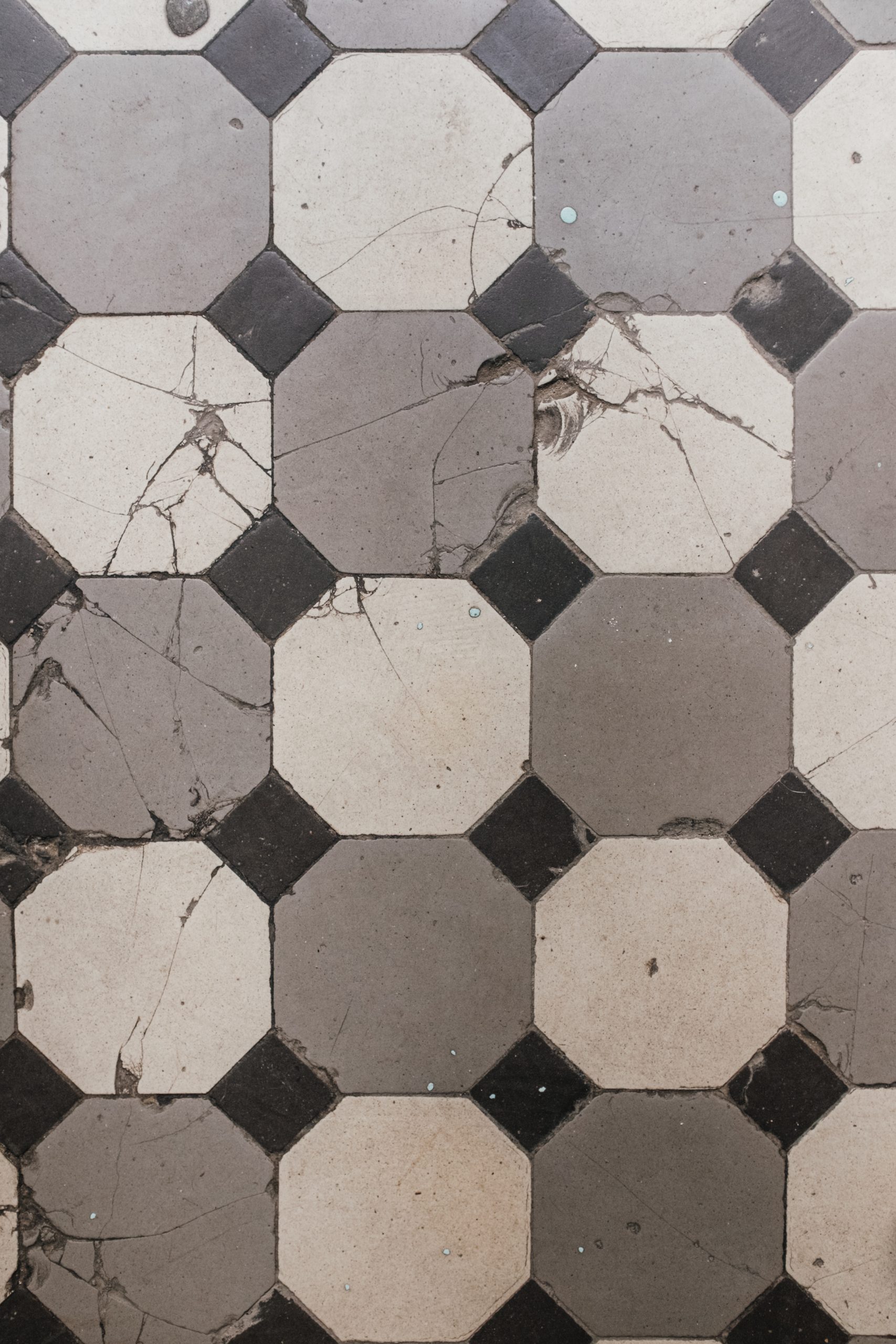
Over the years the porous surface of period tiles will allow dirt and moisture to penetrate, with protective waxes and sealants gradually breaking down. Whether you have uncovered stunning Victorian tiles beneath an old carpet or are simply looking to restore dull tiles to their former glory, the correct products will help you to remove residue and protect the surface. In this guide we take you through the steps required to restore your tiles and keep them in excellent condition.
What are period tiles?
Otherwise known as encaustic tiles, these patterned and unglazed ceramic floor tiles were popular during the Victorian and Edwardian eras, with early tiles manufactured using clay and later styles made using a cement and pigment mixture. These period tiles are known for their matt finish, with geometric styles that proved to be very popular within hallways and entrances.
Although these tiles are very hardwearing, they do require some maintenance, and in most cases a deep clean is enough to bring them back to life. You may even have a few loose or cracked tiles which require your attention; however, these are often quick and straightforward repairs.
Problems to look out for in tiled floors
In the past, these tiles were laid on a bedded layer with each tile butted against each other, rather than installing traditional grout lines. Over the years grit, dirt and soil is pushed between these tiles and can cause potential issues. The tiles themselves are very durable, however they are brittle and you may find cracks, chips and loose tiles within the surface.
We recommend examining for obvious physical defects; however, you should also look for areas of unevenness, dampness and any bounce within the surface. If there are no signs of subsidence or rot, you can carefully remove the damaged or lose tiles. These can then be replaced with salvaged tiles or with new tiles that are designed to match the originals.
Cleaning period tiles
A mild tile cleaner can be used with hot water to give the tiled area a thorough clean. However, you should avoid allowing water to pool on the surface, as this can allow moisture to make its way between the tiles. Try to soak up excess water as you work your way across the surface, and avoid using very wet cloths or mops.
There are machines available for hire, and we recommend using a rotary machine with adjustable weights as this will maximise the effectiveness of the cleaning pad. However, if the tiles are particularly delicate, a gentler hand cleaning approach is likely to be a more effective option.
Repairing and replacing encaustic tiles
Once the tiled floor is clean, it should be much easier to spot any imperfections. To remove a damaged tile run a scraper along the edges and gradually ease the tile out. If there is a large area which needs replacing or repairing, we recommend that you take a photo or create a drawing, so that each tile can be returned to the correct position within the pattern.
The area beneath the removed tiles should be cleaned thoroughly, with all dirt, dust and debris removed. You may find the adhesive bed has crumbled over the years, so a new layer of tile adhesive may be required. It is recommended to remove at least 6mm of the original bed, so the new tile adhesive can correctly adhere.
• Loose tiles – If the tiles were simply loose, they can be cleaned and re-laid. Simply apply the adhesive to the back of the tile and press firmly into the adhesive bed. Wipe any surplus adhesive with a damp cloth and leave to fully dry and bond.
• Chipped tiles – If any of the tiles were chipped, it may be possible to repair the area with a coloured epoxy putty. Firstly, you should clean the tile, then apply the putty with a wet finger to the chipped area, this should be smoothed immediately.
• Paint splashes – It is very common to find old paint splashes on tiles, however these can usually be removed easily with a scraper. Avoid metal scourers, brushes and wool, as they can damage the surface. Instead, choose a blade which can be held at an angle to prevent scratches.
Re-sealing and protecting encaustic tiles
An impregnating tile sealer which allows moisture to travel through the surface is important, as many period properties were built without a damp proof membrane. It is also best to avoid a wax coating, as moisture will be trapped within the tiles leading to a white surface and potential damage from dampness.
If the property has a damp-proof membrane, sealers and waxes can be used freely to apply a sheen to the tiles. After applying the sealer, wait for 24 hours and then buff the area. The shine can be protected by regular sweeping, vacuuming and mopping; however, care should be taken to prevent water damage.
A range of wholesale tile cleaners, sealers and polishes
Here at Quantum, we stock a range of tile cleaning products from leading brands such as HG, Lithofin and Vulcaseal. Our products are available on a wholesale basis to stockists throughout the UK and Ireland, and we offer everything needed to clean, protect and maintain both modern and vintage tiles.

